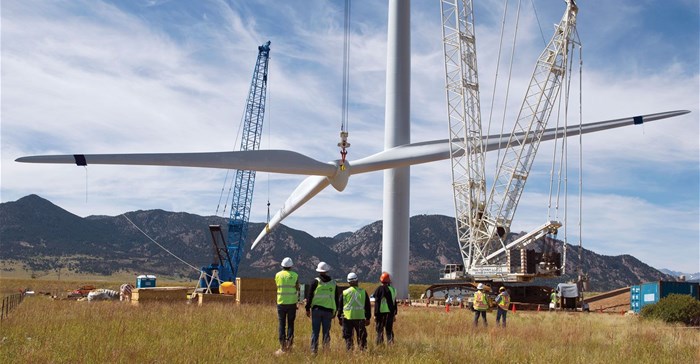Partnerships provide a lifeline for cash-strapped countries

In an article published in the August 2016 issue of the African Journal of Management Research, authors Bernadine J. Dykes and Carla D. Jones, described PPPs as “cooperative arrangements between governments and multinational corporations that are created to finance, construct and manage infrastructural projects”.
The writers observed that in past decades “Africa’s involvement in PPPs has been limited relative to other continents”, but that lately, due to pressures on national budgets and the inability of the public sector to provide efficient services, “African governments are looking harder for infrastructure development cash to support population growth and the demand for commodities”.
With a gross domestic product of around $37 billion in the 1990s, according to the World Bank, Morocco could not afford huge infrastructure investments while fulfilling its recurrent budgetary obligations, including paying civil servants’ salaries and running its government.
Then a lucrative opportunity emerged five years ago that took advantage of Morocco’s unique position on the Straits of Gibraltar, with proximity to Europe. The Tanger-Med will be the largest port in North Africa, and part of a wider plan to boost the economy of the region.
The idea is to create a logistics hub to attract manufacturers to the region, thereby turning the greater Tangiers area into a logistics and export centre for moving goods to the USA, the eastern Mediterranean and beyond, to Asia.
The project will be implemented, coordinated and managed by the Tangier Mediterranean Special Agency (a private company with public prerogatives), operating under an agreement with the government and interacting with the different ministries involved.
Typically, PPPs consist of contractual arrangements referred to as BOTs, which stands for Build, Operate and Transfer. For example, a private company may provide financing for a road project and the government grants permission to such a company to operate the road for a specified period. This allows the company to recoup its investment, after which it transfers operations of the road to a government agency. The Dakar-Diamniadio Road in Senegal, which was completed in 2013, is a good example. The total cost of the project is estimated at $335 million.
Infrastructure gaps
Africa needs $93 billion annually for infrastructure, which is approximately 15% of the continent’s GDP, notes the African Development Bank (AfDB). Therefore, PPPs are lifelines for cash-strapped governments.
“Governments are increasingly turning to PPPs to bridge the financing gap and deliver more efficient and cost-effective infrastructure,” writes Ventures Africa, a website dedicated to African business.
Kenya, for example, requires infrastructural investments of between $4 billion and $5 billion annually to cover its financing gap. Projects such as the Lake Turkana Wind Power Project have been successfully executed through PPP arrangements.
Neighbouring Tanzania needs up to $8 billion per year to meet its infrastructural financing shortfall. In Ghana, a country with increasing budget deficits, former minister for finance and economic planning Seth Terkper says the country needs to invest $1.5 billion annually in infrastructural development; however, other analysts believe financing requirements could be up to $3.5 billion.
Even South Africa, often touted as a model for PPPs in Africa, is facing energy problems “best characterised by the power shortfalls and load shedding,” states Ventures Africa. Experts cannot agree on what South Africa requires for infrastructure, but figures range from $4.5 billion to $8 billion annually.
The private and public sectors like to consider a PPP project a win-win: the government can claim to have led efforts to provide infrastructure or services for citizens, and private investors can promote their involvement in socioeconomic development, even if they also set their eyes on profits.
Yet a government’s perception of services or infrastructure as a social undertaking, especially in poor countries, contrasts with the private sector’s profit-driven market solutions, and often leads to problems.
“As with many markets,” reports Oxford Business Group, a UK-based business intelligence firm, “there have been stumbles with the implementation of some PPP projects [in Morocco].
“Partnerships with private firms in the utilities sector, for example, have faced opposition over tariff and pricing changes, as well as questions over access, with privately managed water utilities in major cities attracting protests over pricing and other issues,” notes the business intelligence firm.
Trends
In late 2015, private investors engaged by the Nigerian government to distribute electricity faced public outcry over plans to increase electricity tariffs. Unable to establish their preferred tariffs, Nigeria’s electricity distribution companies last April claimed they had lost about $2.3 billion since November 2013, when they took over responsibility for power distribution.
Private firms are not warmly embracing PPPs in Africa just yet. In its 2015 report Infrastructure Financing Trends in Africa, the Infrastructure Consortium for Africa (ICA), an organisation that promotes access to sustainable infrastructure services on the continent, notes that uncertainty and a lack of political will are barriers to successful PPPs.
The ICA stresses that many public institutions lack capacity, which stokes fears of financial risk for private investors. It criticised weak regulatory frameworks and corruption in some countries.
The AfDB lists factors working against successful PPPs: “inadequate legal and regulatory framework for PPPs; lack of technical skills to manage PPP programmes and projects; unfavorable investor perception of country risk, Africa’s limited role in global trade and investment, small market size, limited infrastructure and limited financial markets”.
Strategy
Dr Amit Thakker, who heads the Africa Healthcare Federation, which advocates for better health-care systems on the continent, says that African countries can achieve better health-care systems through PPPs. Dr Thakker proposed a three-phase strategy for implementing PPPs in Africa.
The first phase, P1, consists of a government entering into dialogue with a private investor to clarify roles and vision. P2 consists of “creating and adapting regulatory frameworks and contractual obligations and the institutionalisation of PPP Acts.” P3 “will be the project implementation phase, which will include building and operating projects and products, followed by evaluation and sharing of information and case studies”.
Some countries are already changing laws or enacting new ones to improve the business environment. Kenya’s PPP laws are meant to assure the private sector of policy stability and market certainty. The government’s goal is to execute up to 80% of its projects through PPP financing by 2030.
Among other incentives, Tanzania’s Finance Act 2014 allows the private sector to make PPP proposals that circumvent competitive tender processes, allowing investors to engage with partners of their choice.
The Moroccan parliament in December 2014 passed a new PPP law that permits private investors to lead in the planning, financing and execution of public projects, although public interest could prompt the state to abort a project.
In an article published on the World Bank’s website, Laurence Carter lists five key factors that led to the success of Senegal’s Dakar-Diamniadio road. The first was political commitment. President Macky Sall was the first driver on the road and the first to pay a toll. The second was stakeholder engagement, including outreach to communities.
The third factor was the commitment of the private partner, the Eiffage Group, a French company. The fourth was the involvement of development institutions, including the AfDB and the World Bank. Lastly, Carter mentioned that commuters could see “clear, visible benefits”, including shorter commutes.
Despite the many problems associated with PPPs, the potential benefits are tantalising for many countries. Countries still in search of the right PPPs recipe may want to study Senegal’s model.
Source: Africa Renewal.



























